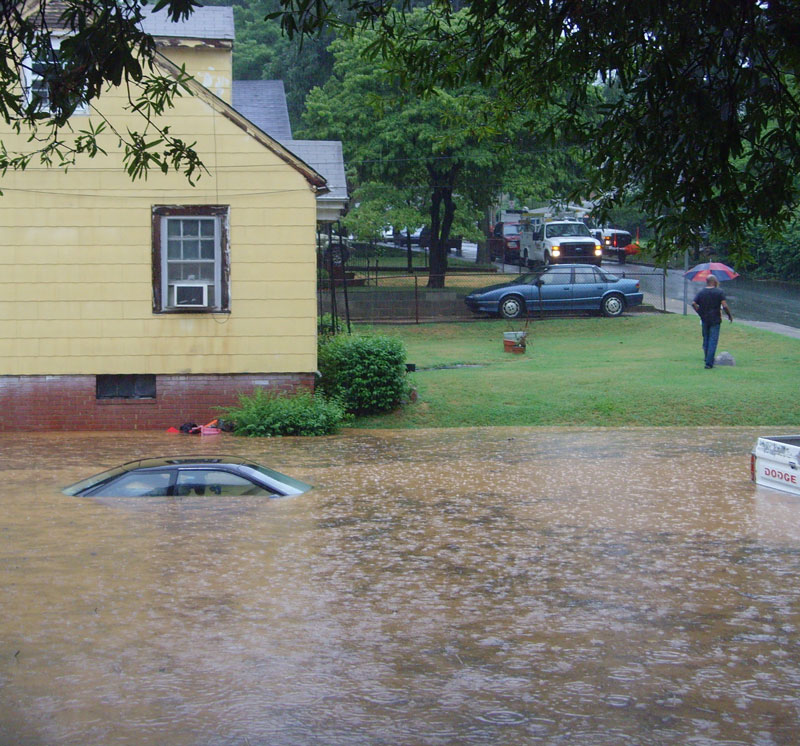Charlotte Tackles Flooding Head-On

The headline in the Washington Post the other day caught my eye: “Charlotte Bulldozes Against Flooding.” It’s 200 miles from the coast and almost 800 feet above sea level but since it’s dealing with flooding it interests me. Charlotte is the capital, the largest city in North Carolina, and now the 16th most populous city in the U.S. A few years ago it was the fastest growing in the nation.
Rain and runoff are causing the flood problems in Charlotte. Frances Sellers’ article gave some good insights into the problems communities like Charlotte face with record rainfall – one of the effects of global warming, as the oceans evaporate more moisture – which comes down as rain or snow. To their credit, Charlotte is being agressive with their flooding problem.
As noted the residents and local experts realize their solution is good for now, but has limits. It’s worth highlighting what they are doing and why they realize this is not a scalable permanent solution.
With varied terrain and streams rainfall can multiply dramatically. Like most metropolitan areas porous land and vegetated areas have been replaced by roads, parking lots, and rooftops that stops the natural path for the water to penetrate into the ground. Starting in the 1990’s the city and the county began to change the situatiion, turning structures back into absorbent grasslands through a buyout program. Four hundred and sixty homes and businesses have reportedly already been removed at a cost of $64 million.
They proudly cite that their success has been rapid assessment, planning, buyout of property owners and restoration. In contrast, the article says, FEMA ‘s buyout program can take an average of five years. They are proud that they have been looking ahead trying to figure out what the future problem areas will be, rather than waiting on historic data.
However, even they realize that continued record rainfall like the 11-inch downpour in June that amplified as it worked its way downstream, bursting the banks of the Catawba River will overwhelm their current remediation program. A local civil engineer Bill Hunt is quoted, “We just can’t engineer ourselves out of this problem….What Charlotte has done works very well for 2 or 3 inch rains…but we don’t have tools to fix 11- or 12-inch rains.”
I am impressed that they have recognized that we are in a new era and that past flood records will not show the era of rapid change, in which we find ourselves. The problem is figuring out where this is really headed. No ne can know that for sure. Weather patterns are changing everywhere, making it harder to do forecasts.
In addition to deciding what areas to return to nature, there is the question of funding. Relatively modest scale programs like this make sense in isolation. But how large can they scale? Just as the flooded areas expand geometrically so does the required funding. Funds are not unlimited.
The other issue is that as these buyout programs become precedent and set expectations for others. In their own way they remove the risk from the homeowners and developers, transferring the cost to municipal, state, and Federal buyout programs. It may make the individual owners happy to be “made whole” but some strategic policy experts wonder where this leads. At what point will the burgeoning costs of such a program become a noticeable burden on wider budgets, and get push back.
Also, are programs like this part of the moral hazard, where efforts to solve problems, remove the risk, thereby encouraging more of the risky practice, since the individual feels like someone will compensate them. It can become another form of entitlement. Tough, complex policy questions to be sure.
Of course, the problem, solutions, and dilemma apply to coastal areas as well. There is lots to consider as we enter this new era.
